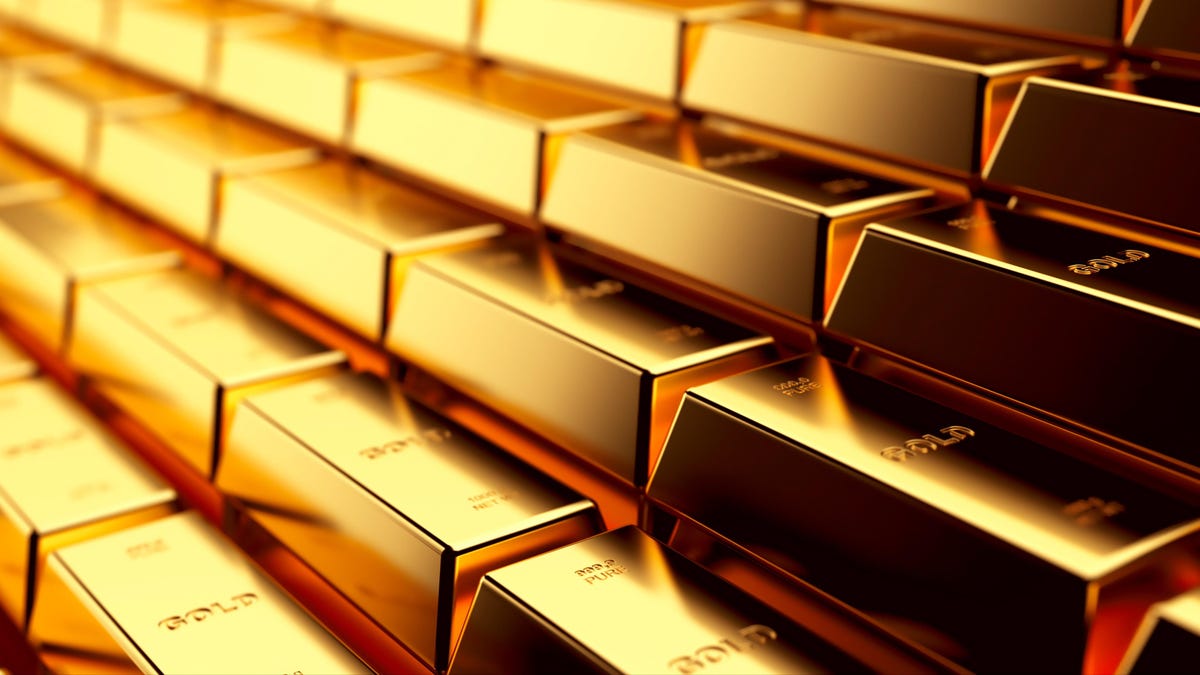Gold Demand Hits Record Highs as Bitcoin Price Climbs
30.10.2024 16:30 1 min. read Kosta Gushterov
Gold's demand has surged, driven by investor FOMO, with global interest exceeding $100 billion in the third quarter—setting a historic record.
This increase reflects a shift in perception, with investors viewing both gold and Bitcoin as safe havens amid economic uncertainty. Gold demand rose by 5% to 1,313 tonnes, and its price skyrocketed by 34% this year, reaching $2,788 per troy ounce.
The World Gold Council reported a rebound in gold-backed ETFs after nine quarters of outflows, with inflows totaling 94 tonnes. Total investment demand for physical gold doubled to 364 million tonnes this quarter, fueled primarily by wealthy families and institutional investors.
In contrast, central bank gold purchases fell by 49% year-on-year to 186 tonnes, the lowest in two years, largely due to high prices. Meanwhile, jewelry demand, accounting for 40% of global gold use, decreased by 7% in Q3.
As Bitcoin approaches its all-time high, retail interest remains low, with Google Trends indicating a mere 23 out of 100 in search interest. Although the Coinbase app has seen a recent ranking boost, retail activity is not yet at past rally levels. However, Bitcoin is gaining traction in Europe, breaking its March ceiling against the euro and benefiting from the weakness of various fiat currencies, showcasing its potential as a hedge against declining traditional currencies.
-
1
Metaplanet Raises $515M in First Step Toward Massive Bitcoin Accumulation
25.06.2025 20:00 1 min. read -
2
Trump-Linked Truth Social Pushes for Bitcoin-Ethereum ETF as Crypto Strategy Expands
25.06.2025 19:00 2 min. read -
3
Bitcoin Hashrate Declines 3.5%, But Miners Hold Firm Amid Market Weakness
27.06.2025 21:00 2 min. read -
4
Bitcoin’s Price Closely Mirrors ETF Inflows, Not Corporate Buys
26.06.2025 11:00 2 min. read -
5
Crypto Company Abandons Bitcoin Mining to Focus Entirely on Ethereum Staking
26.06.2025 20:00 1 min. read
Coinbase Strengthens DeFi Push With Opyn Leadership Acquisition
Coinbase has taken a major step toward expanding its decentralized finance (DeFi) presence by bringing onboard the leadership team behind Opyn Markets, a prominent name in the DeFi derivatives space.
Bitcoin ETFs See $1B Inflow as IBIT Smashes Global AUM record
Spot Bitcoin ETFs recorded a massive influx of over $1 billion in a single day on Thursday, fueled by Bitcoin’s surge to a new all-time high above $118,000.
Grayscale Urges SEC to Allow Multi-Crypto ETF to Proceed
Grayscale Investments has called on the U.S. Securities and Exchange Commission (SEC) to allow the launch of its multi-crypto ETF—the Grayscale Digital Large Cap Fund—arguing that further delays violate statutory deadlines and harm investors.
Bitcoin Outlook: Rising U.S. Debt and Subdued Euphoria Suggest More Upside Ahead
As Bitcoin breaks above $118,000, fresh macro and on-chain data suggest the rally may still be in its early innings.
-
1
Metaplanet Raises $515M in First Step Toward Massive Bitcoin Accumulation
25.06.2025 20:00 1 min. read -
2
Trump-Linked Truth Social Pushes for Bitcoin-Ethereum ETF as Crypto Strategy Expands
25.06.2025 19:00 2 min. read -
3
Bitcoin Hashrate Declines 3.5%, But Miners Hold Firm Amid Market Weakness
27.06.2025 21:00 2 min. read -
4
Bitcoin’s Price Closely Mirrors ETF Inflows, Not Corporate Buys
26.06.2025 11:00 2 min. read -
5
Crypto Company Abandons Bitcoin Mining to Focus Entirely on Ethereum Staking
26.06.2025 20:00 1 min. read


